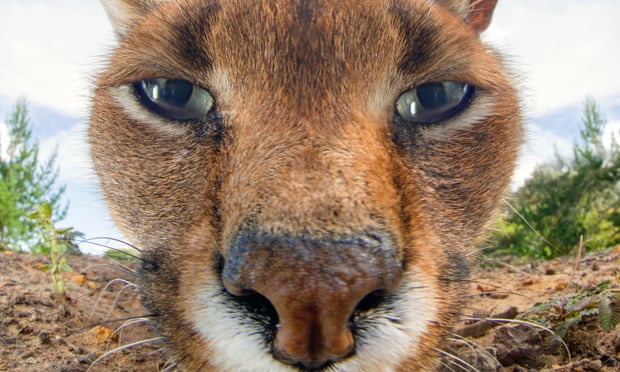
The eyes say it all. They answer questions about a creature’s social scale, and its place in the pecking order. The geometry of the eye indicates whether an animal is the hunter, or the hunted – and how tall it walks.
Scientists from the Universities of California Berkeley and Durham in Britain have
discovered just how much they can learn from pupils. As every householder knows, when the domestic cat narrows its eyes to slits, it does so vertically. Sheep, deer and horses however have eyes with horizontally elongated pupils.
Martin Banks, professor of optometry at Berkeley and Gordon Love, director of the Centre for Advanced Instrumentation at Durham, have learned something else. So important is it for a grazing animal to keep an eye on the ground that when it drops its head, the pupil rotates by up to 50 degrees to stay horizontal.
“The first key visual requirement for these animals is to detect approaching predators, which usually come from the ground, so they need to see panoramically on the ground with minimal blind spots,” said Professor Banks. “The second critical requirement is that once they do detect a predator, they need to see where they are running. They have to see well enough out of the corner of their eye to run quickly and jump over things.”
The two scientists and their colleagues report in the journal Science Advancesthat they looked at the eyes of 214 closely-studied animals, all terrestrial vertebrates. These included Australian snakes, every species from the cat and dog families as well as hyenas and mongooses, and domestic grazing animals as well as tapirs and rhinoceroses. The challenge was to see if they could predict a relationship between an animal’s ecological niche and the shape formed by the pupil in its eye.
They found a pattern. The smaller ambush predators – those little creatures that lie in wait for their lunch – are more likely to have pupils that narrow vertically. Hunters that prowl by day or night need to make the most use of available evening light yet exclude the glare of the sun, which is why the eyes must narrow dramatically. The mouse-hunting domestic cat can change the area of its pupil gaze 135-fold and the insectivorous gecko 300-fold. Round-eyed humans – that is, with circular pupils – can reduce them 15-fold.
But humans walk tall. So do lions and tigers, and they too have round eyes and circular pupils. The big cats are “active foragers”: they hunt down their prey. The researchers included 65 ambush predators with eyes in the fronts of their heads for this study. Of these, 44 had vertical pupils and 82% had shoulder heights less than 42 cms or 16.5 inches. So the reasoning is that binocular vision and vertical slit pupils together make it easier for small animals to pounce, by using the difference between close focus on the innocent dinner and the out-of-focus or blur beyond and before it, to judge the distance precisely.
The team started with a classic 1942 text on the physiology of the eye that proposed that slit-shaped pupils allowed for different musculature and a greater range of light entering the eye.
But the theory did not explain why the eye slits could be sometimes vertical, sometimes horizontal. When a grazing animal lifts its head, its eyes are elongated horizontally. But surely, when it drops its head to crop grass, the eyes would appear near vertical to the ground? The scientists set out to observe the eyes swivel to stay parallel with the ground.
Professor Love began research in astronomical technology but joined the eye project years ago. “The physics of huge telescopes, microscopes, and eyes is all rather similar so it wasn’t such a big jump,” he said. Professor Banks went to Oakland Zoo in California to observe at first hand, and Professor Love took his camera to the Yorkshire Dales to record changing pupil shapes in the field.
“The photography part was new and fun and took more time than I care to remember,” he said. “You might think that sheep would be easy to photograph. I now have eternal respect for David Attenborough and his colleagues.”
[“source-theguardian”]